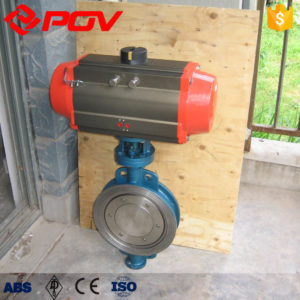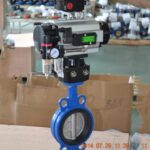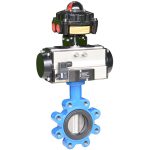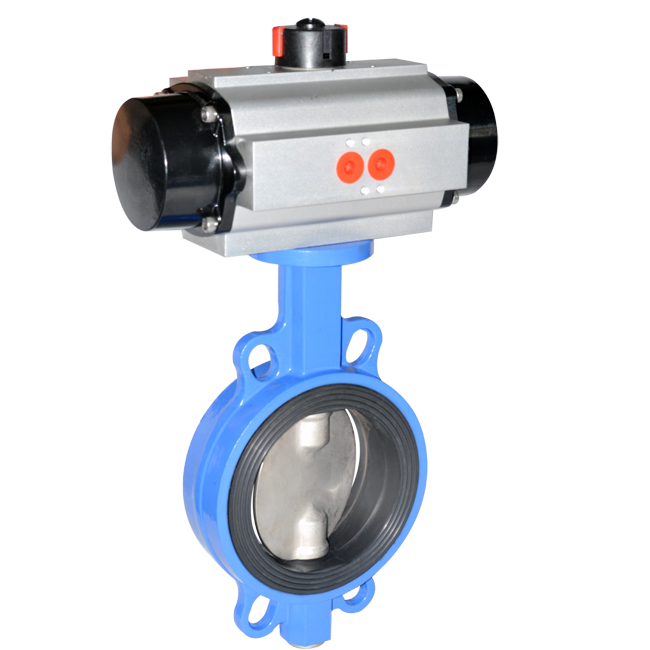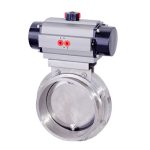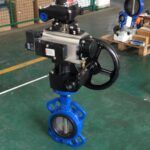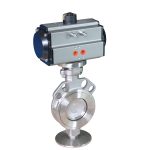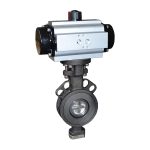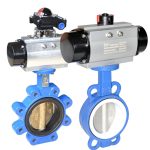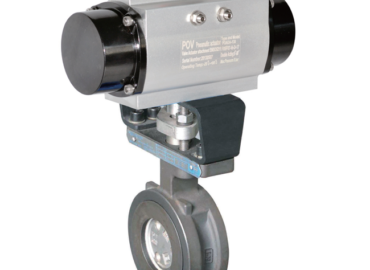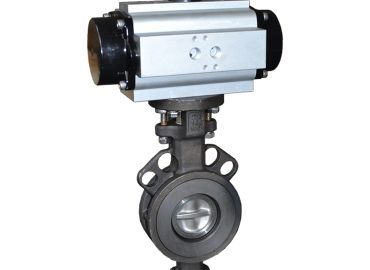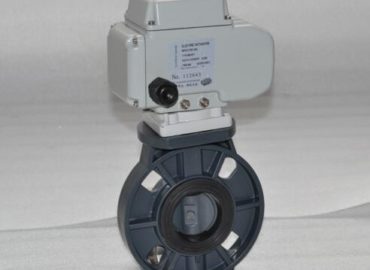Pneumatic actuators also known as pneumatic head pneumatic head, is driven by air pressure to open and close or adjust the valve actuator. Cylinder, piston, end cover, seals, gear shaft, screws, etc. is an actuator in a category.
It is also an important part of pneumatic control valve.
When the compressed air enters the pneumatic actuator from the Nozzle A, the gas pushes the two pistons to move in A straight line toward both ends (cylinder head end). The rack on the piston drives the gear on the rotating shaft to turn 90 degrees counterclockwise. And the valve is open.
At this point, the gas at both ends of the pneumatic executive valve is discharge with B pipe nozzle.
On the contrary, when the compressed air enters the two ends of the pneumatic actuator from the B official nozzle. The gas pushes the double plug to move in a straight line toward the middle. And the rack on the piston drives the gear on the rotating shaft to rotate 90 degrees clockwise, and the valve is closed.
At this point, the gas in the middle of the pneumatic actuator is discharge along with the A nozzle.
After the long-term operation of pneumatic actuators, certain calibration work needs to be done. Many users are not very familiar with this. Today, I will take you to know about the calibration method of pneumatic actuators:
Air actuators inspection preparation and appearance inspection:
1. All test instruments shall be electrified and preheated 30 minutes in advance;
2. The test air source pressure should be 0.6± 0.1mpa;
3. No obvious damage to the appearance of the actuator, no obvious dent in the gas guide copper pipe and firm assembly;
4. The length of the connecting screw of the position transmitter must meet the technical requirements of the model of the inspected actuator. The plane formed by the connecting rod and connecting screw fastened to the transmitter shaft shall perpendicular to the horizontal plane.



